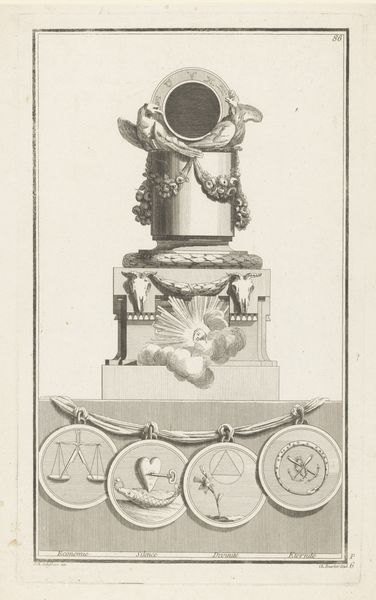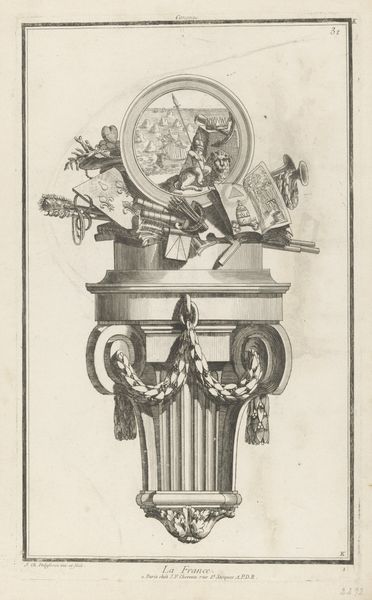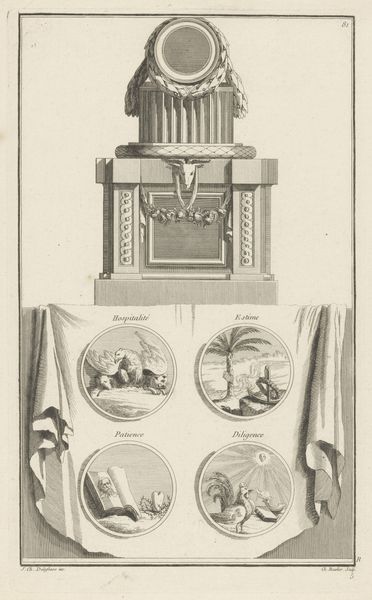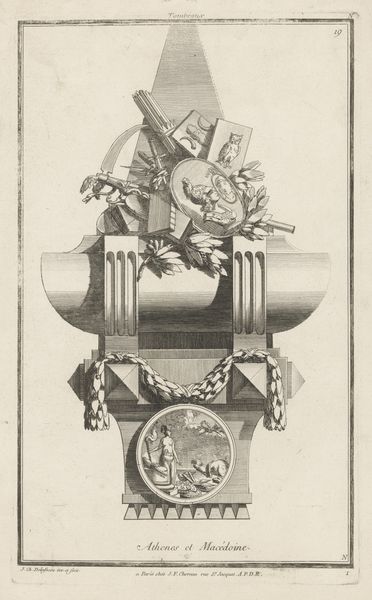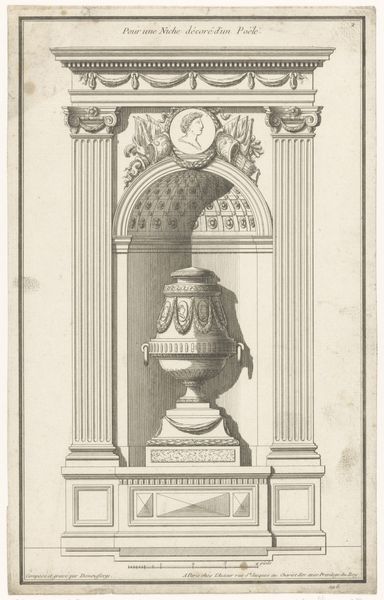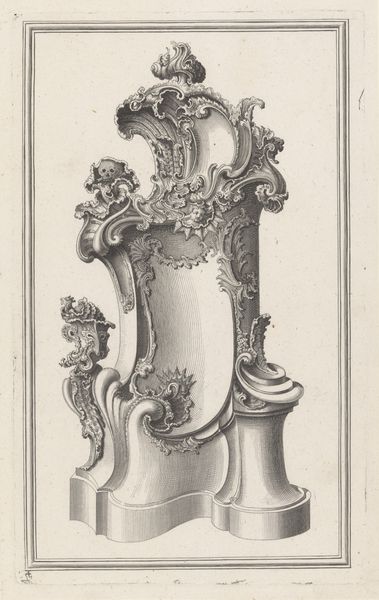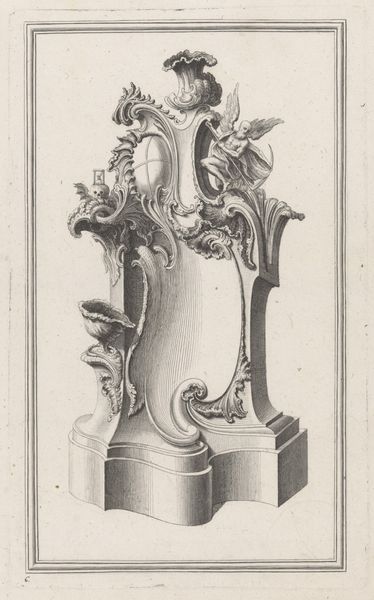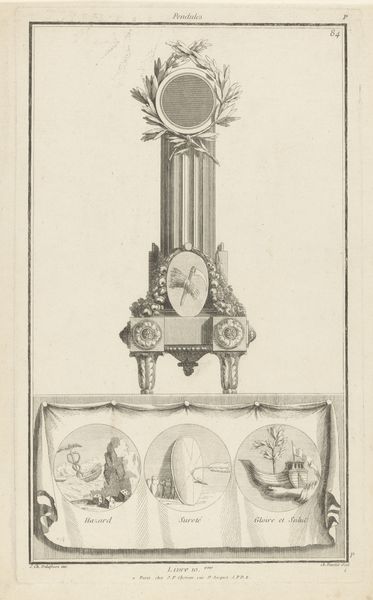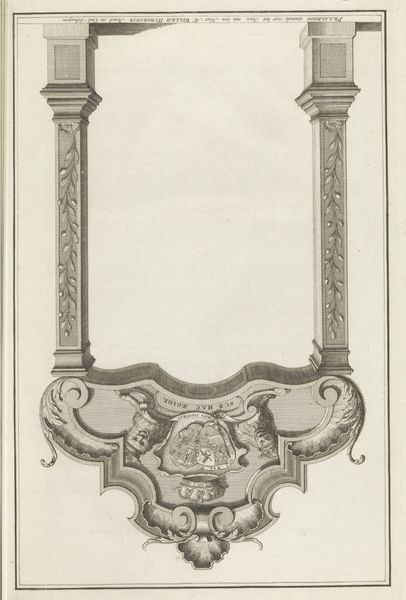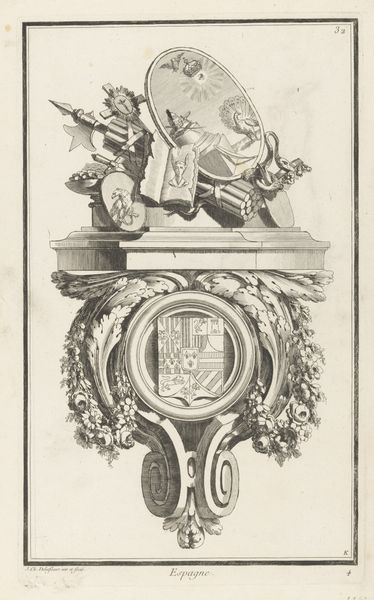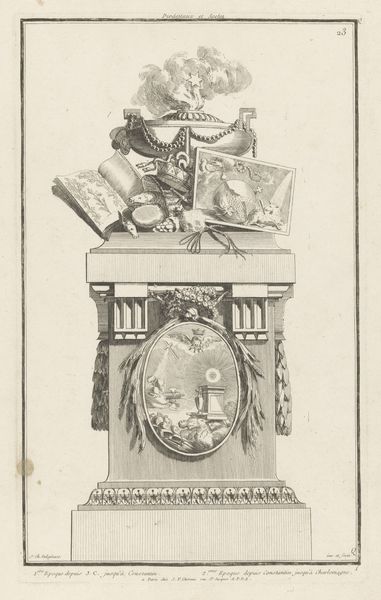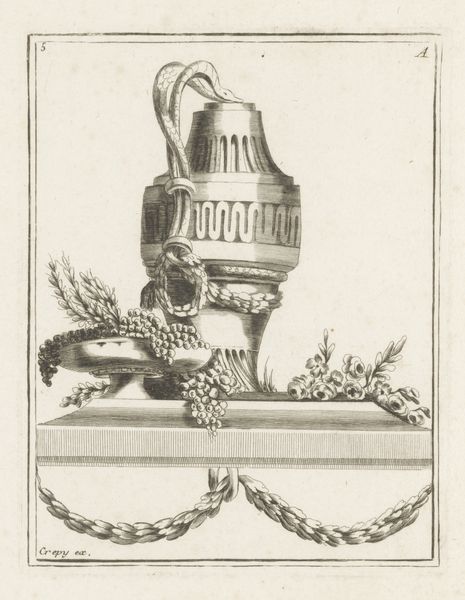
print, engraving
#
historical design
#
table
#
neoclacissism
# print
#
old engraving style
#
personal sketchbook
#
19th century
#
history-painting
#
decorative-art
#
engraving
Dimensions: height 386 mm, width 237 mm
Copyright: Rijks Museum: Open Domain
Editor: So this is "Afrika," an engraving from around 1768-1771. The level of detail is quite stunning! All of these images and classical motifs… It definitely feels symbolic. What strikes you most about its symbolism? Curator: It’s a fascinating example of how symbols encapsulate cultural memory. Look at how Africa is represented: a woman standing proudly with a lion. The lion, traditionally a symbol of strength and royalty. What does that evoke for you? Editor: Power and maybe even a sense of untamed wildness? Curator: Precisely. Now, consider the snake encircling the scene and holding a spear. The serpent is complex; it could mean protection or even a warning about perceived dangers, doesn't it? How do you read that? Editor: Perhaps danger, hinting at the unknown or even a fear of the 'other.' It’s a bit unsettling now that I think of it that way. Curator: This is neoclassicism's engagement with the world as it was perceived. Each image becomes loaded with established meaning but open to varied individual understandings, too. It prompts reflection on the complexities inherent in cross-cultural representation. What do you make of the table itself as part of the design? Editor: The table is the base of the symbolic weight… like Europe is literally "supporting" this image of Africa. But thinking about the era it came from and the mindset, the symbols reveal an old story that’s still… potent. Curator: Exactly! These visual languages are never neutral; examining their coded symbolism lets us uncover how perceptions have been built and sustained over time. Symbols reveal the continuity of certain perspectives. Editor: That makes me look at art, especially art with cultural themes, completely differently now! It really reveals layers of cultural and even psychological meanings. Curator: Yes, visual languages connect to shared, culturally maintained, social memory that should invite constant questions and debate.
Comments
No comments
Be the first to comment and join the conversation on the ultimate creative platform.
